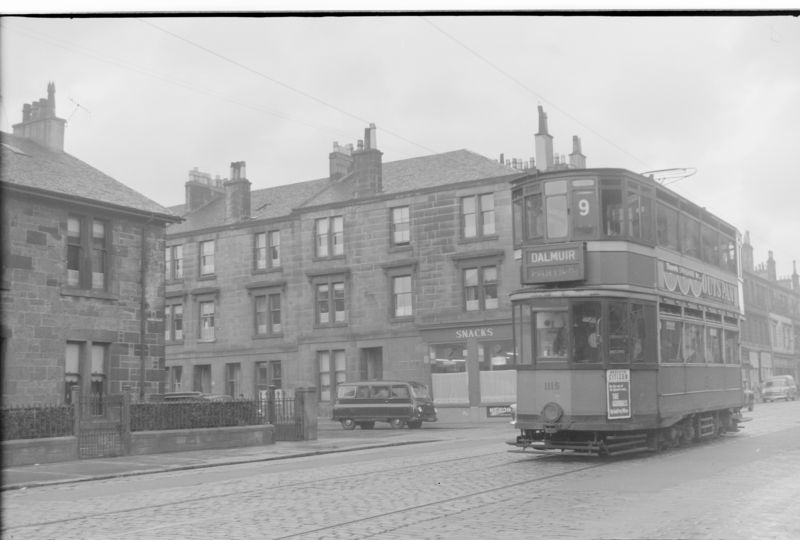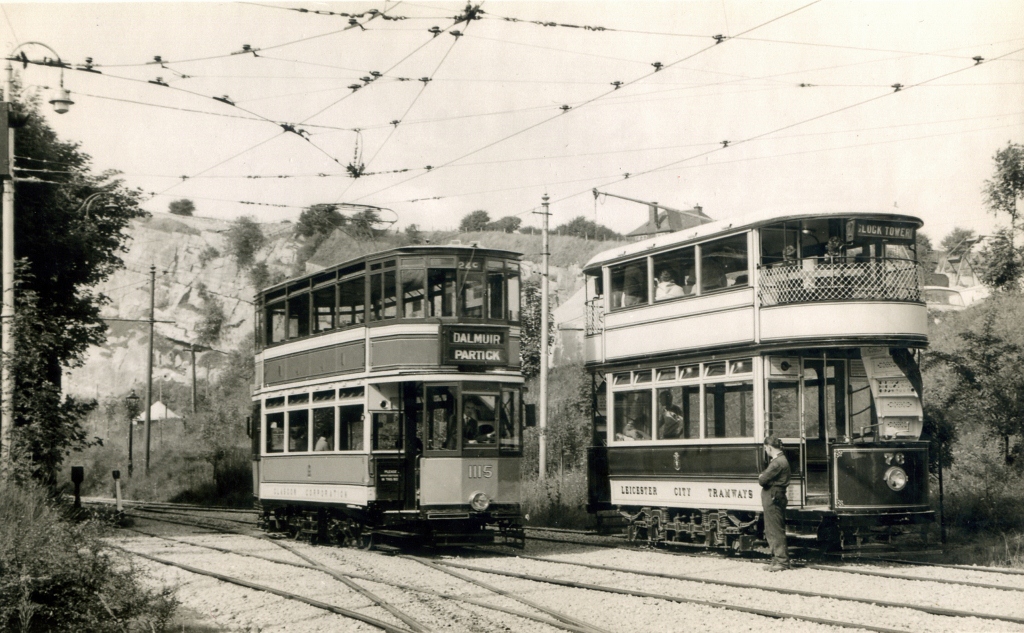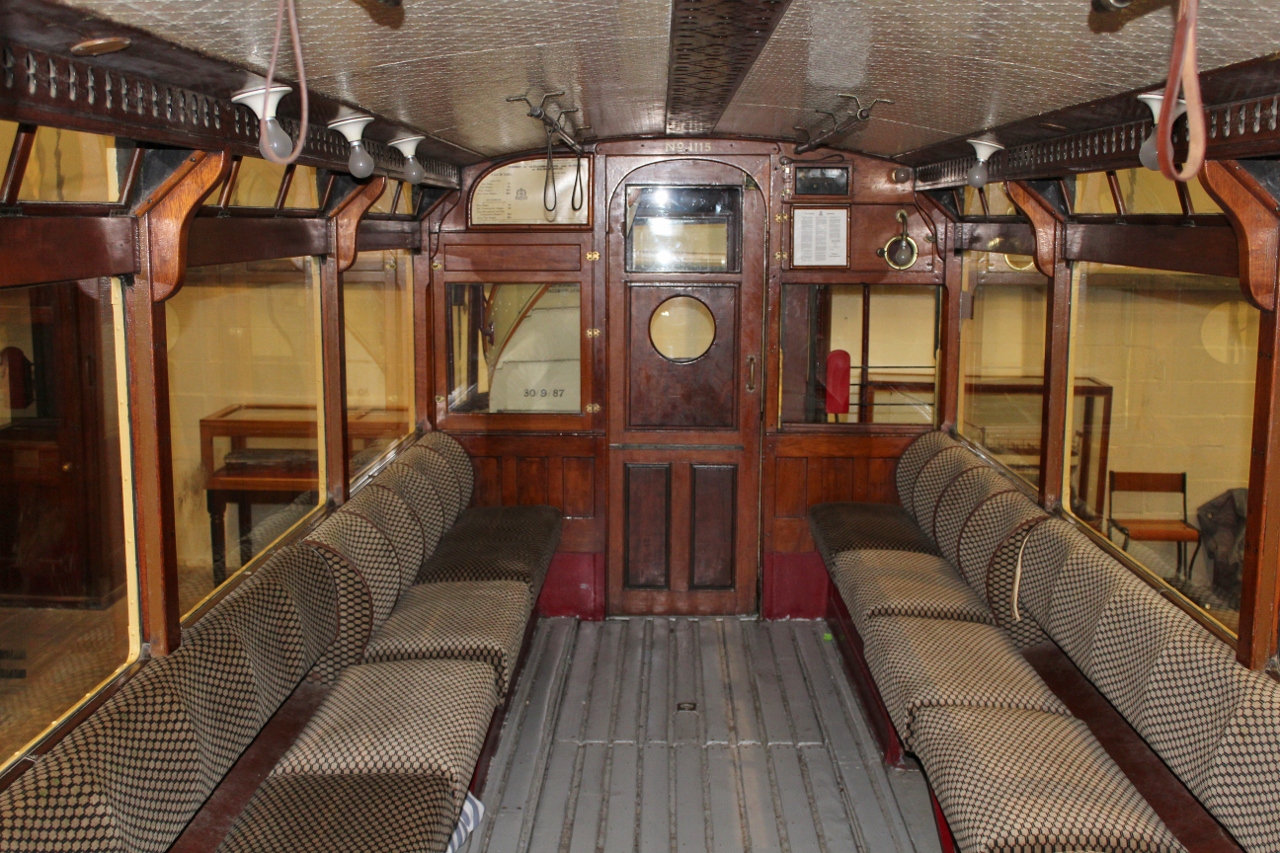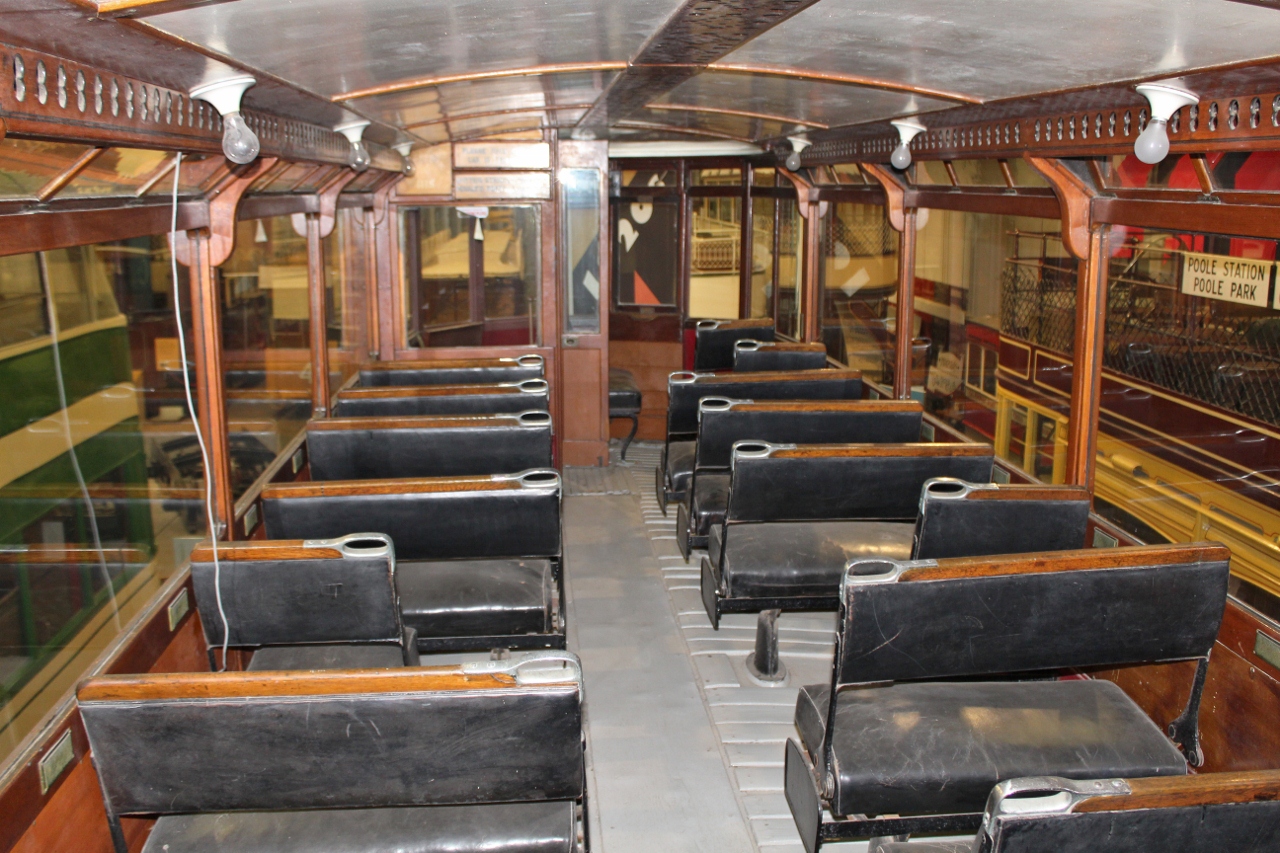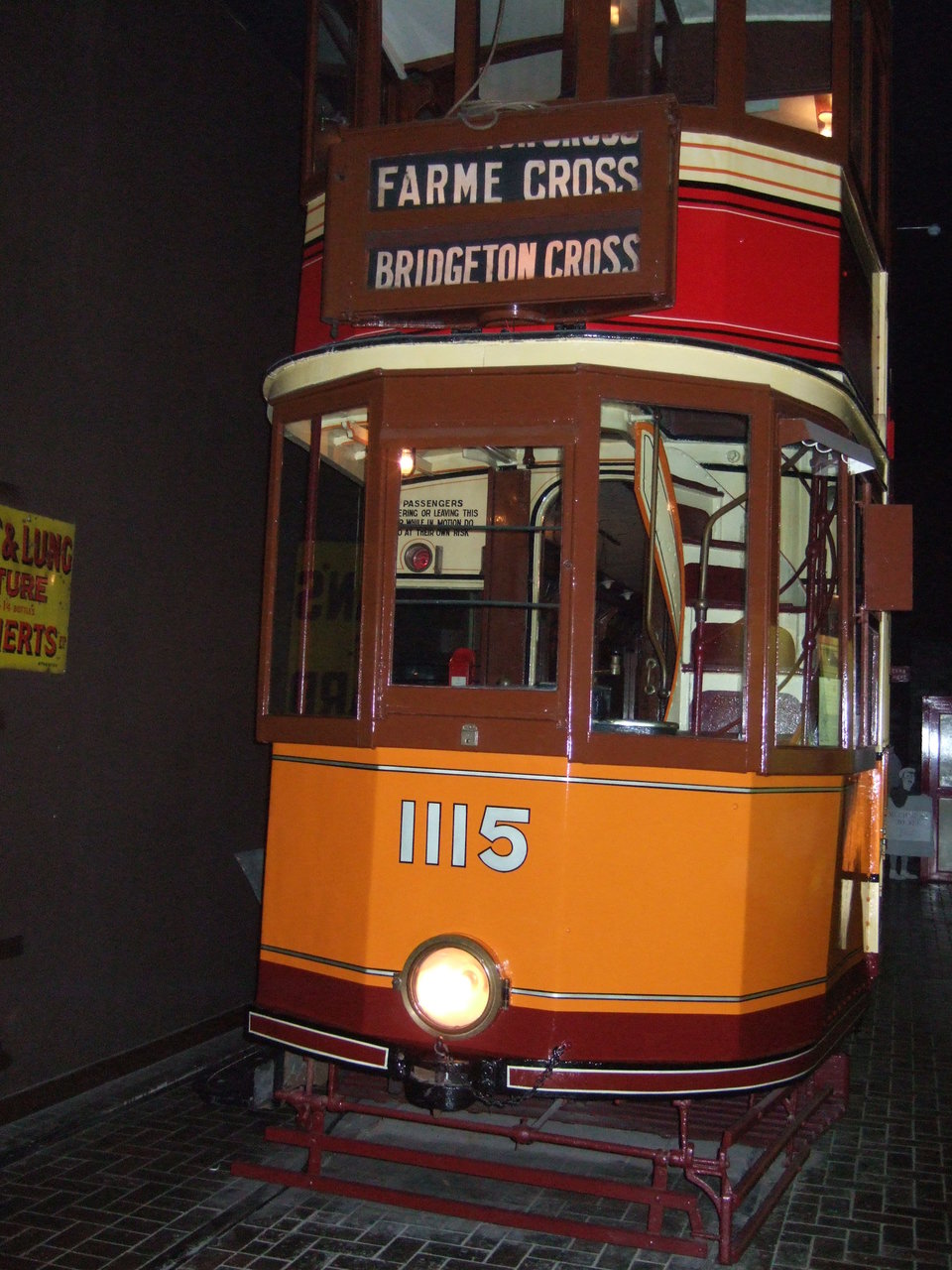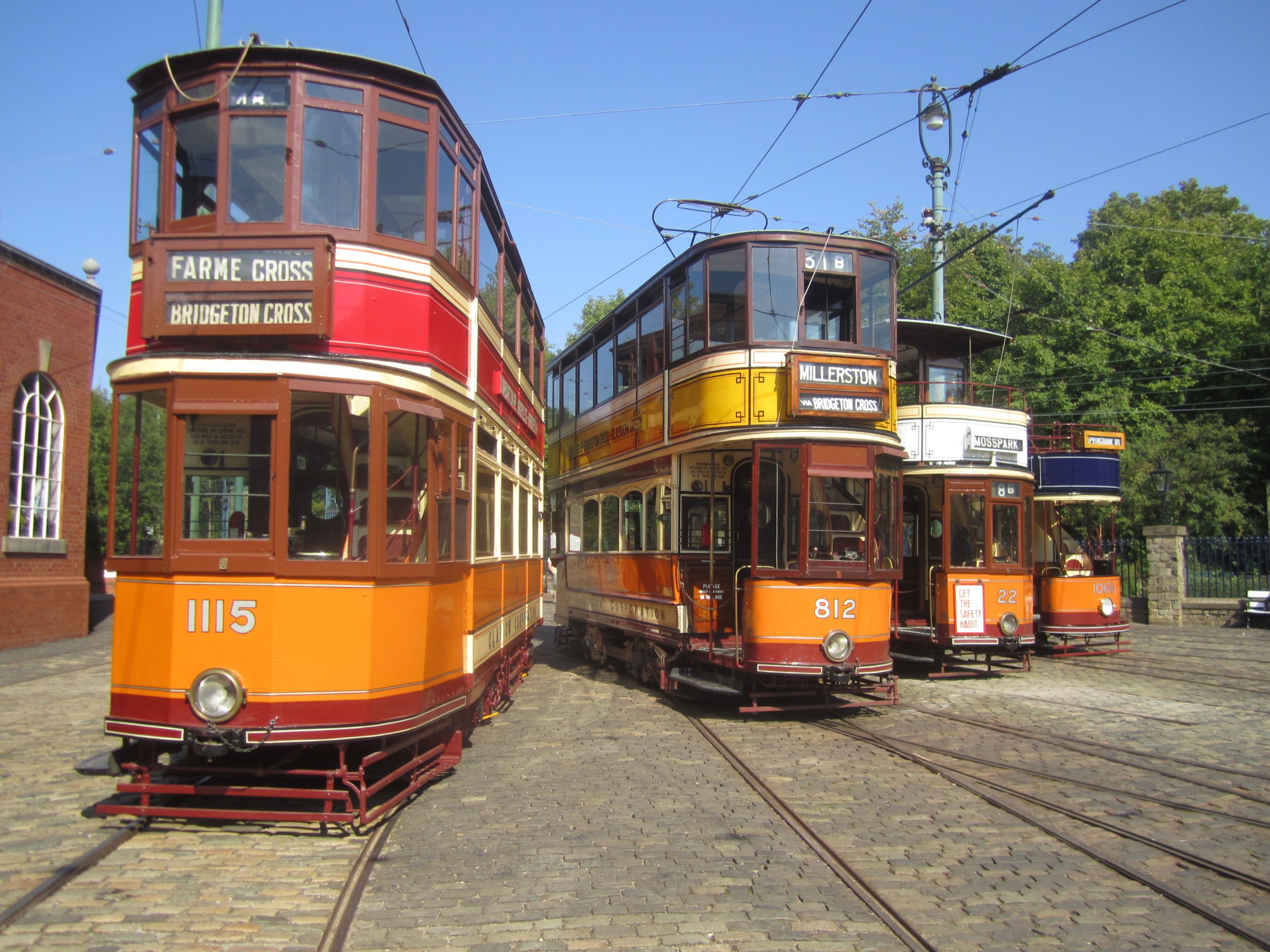Glasgow Corporation Transport No. 1115
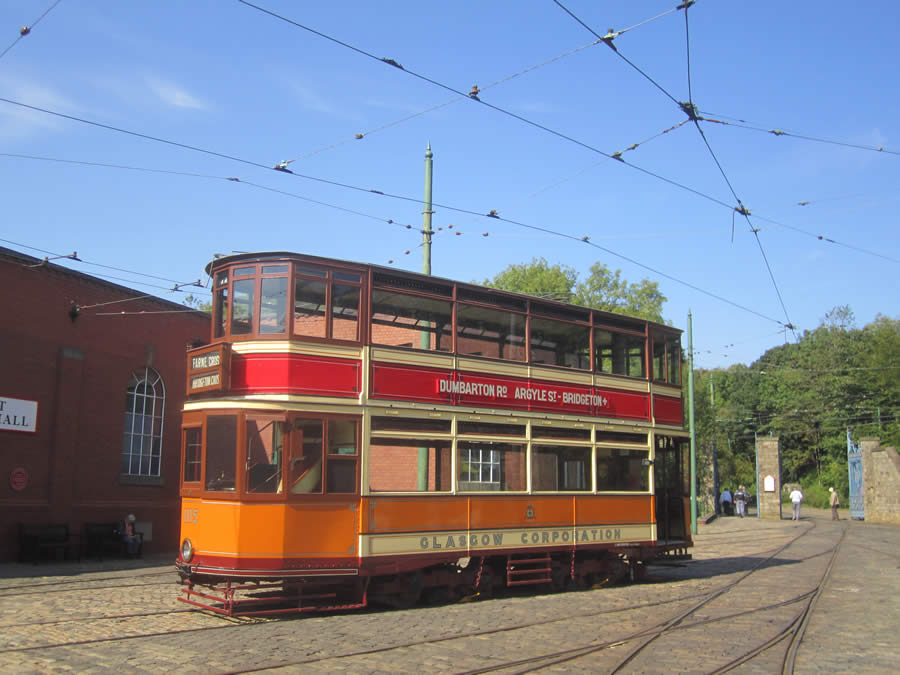
Photo: Jim Dignan
Glasgow 1115 represents a clear departure from that city’s traditional policy of gradually refining and upgrading its existing tramcar fleet through a series of incremental improvements. When faced with growing competition on its inter-urban services during the 1920s from unregulated bus operators, the Transport Department responded by adopting a radically different design of tramcar of the type favoured by large London operators, even though many of its components were designed to be inter-changeable with the existing Standard tramcars.
Hitherto, the city had exclusively operated traditional four-wheeled tramcars despite their tendency to induce an unpleasant ‘tail-wagging’ motion when passing over rail joints. But in order to improve the ride quality for passengers a new batch of 50 tramcars was ordered in 1928 that incorporated a then radical new design of eight-wheeled maximum traction bogies that were renowned for their smooth running.
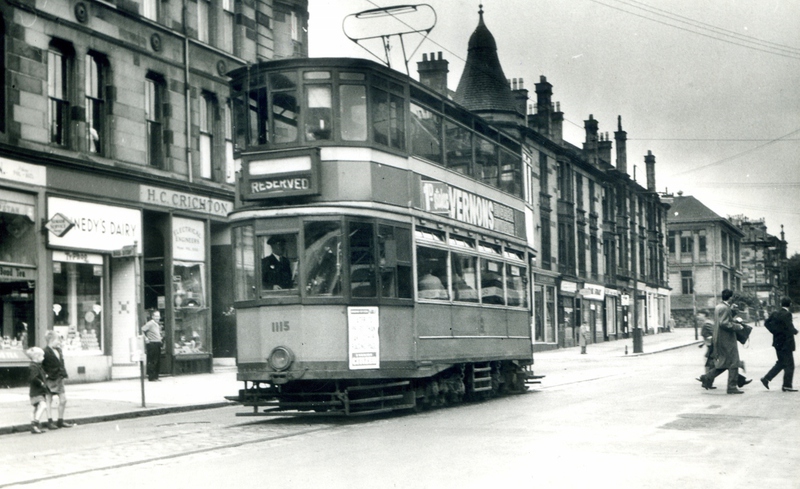
1115 in service. R.B. Parr, 13/8/1961.
The bogies were supplied by the Ayrshire-based Kilmarnock Engineering Company and for that reason the trams became known as “Kilmarnock bogies”, though they were actually manufactured in the parent company’s English Electric works based in Preston. The bodies were constructed by three separate builders albeit to an identical specification and 1115 was one of 30 provided by the Motherwell firm of Hurst Nelson. One innovative feature involved the use of patented steel strengthening to the main pillars and this kept the sides of the tram very slim and allowed for extremely wide saloon interiors, enabling the use of double transverse seating on the lower deck for the first time.
Specification
- Type of tram
- Double deck, all-enclosed bogie electric tramcar
- Livery
- Orange and cream with red route colour
- Seating capacity
- 68 (30 down, 38 up)
- Date built
- 1929
- Date entered service
- 1929
- Manufacturer of body
- Hurst Nelson, Motherwell
- Manufacturer of truck
- Kilmarnock Engineering Co. Maximum Traction Bogie
- Gauge
- Original: 4’ 7¾” Current: 4’ 8½”
- Motor
- MV101DR 2 x 60 hp
- Controller
- English Electric CDB2 form F
- Current collector
- Fischer Bow Collector
- Modification
1943-4 double transverse seating on lower deck replaced by longitudinal seats to allow crush loading in war-time conditions.
‘Jack-knife’ doors installed on the lower deck bulkheads- Withdrawn from service
1961
- Subsequent history
Taken into preservation December 1962.
- Restoration history
Largely unrestored, much of the tram retains its original condition, though the wiring was removed in the early 1990s in order to equip it with 240 volt mains wiring as part of a static display exhibition.
- Current status
- Displayed in non-operational condition
- Date started operating at Crich
- 1971 for 6 years, most recently in 1976.
- Total mileage covered at Crich
- 1,976
- Current location
- Exhibition Hall
- 1929 – 1961Operational on original tramway
- 1961 – 1970In storage
- 1970 – 1976Operational at Crich
- 1976 –On display (as centrepiece of ‘Trams at Night’ display between 1990 & 2010 and currently in the Exhibition Hall)

